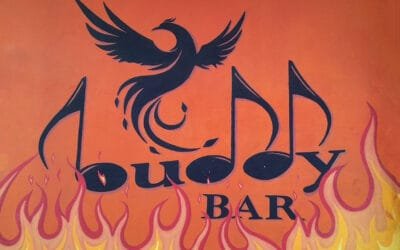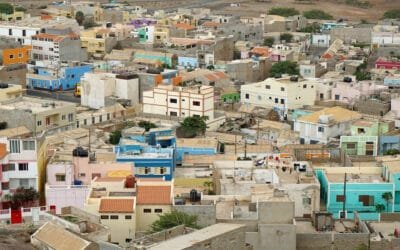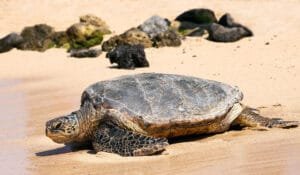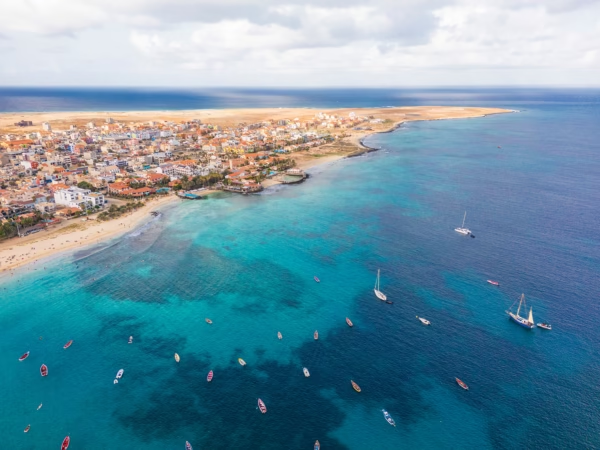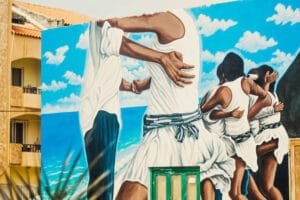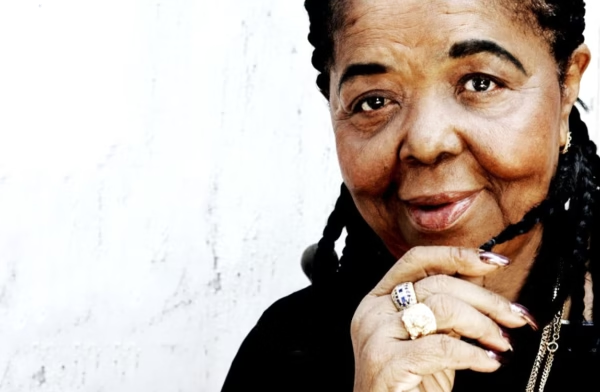Kite Beach: One of the Best Trade Winds’ Playgrounds
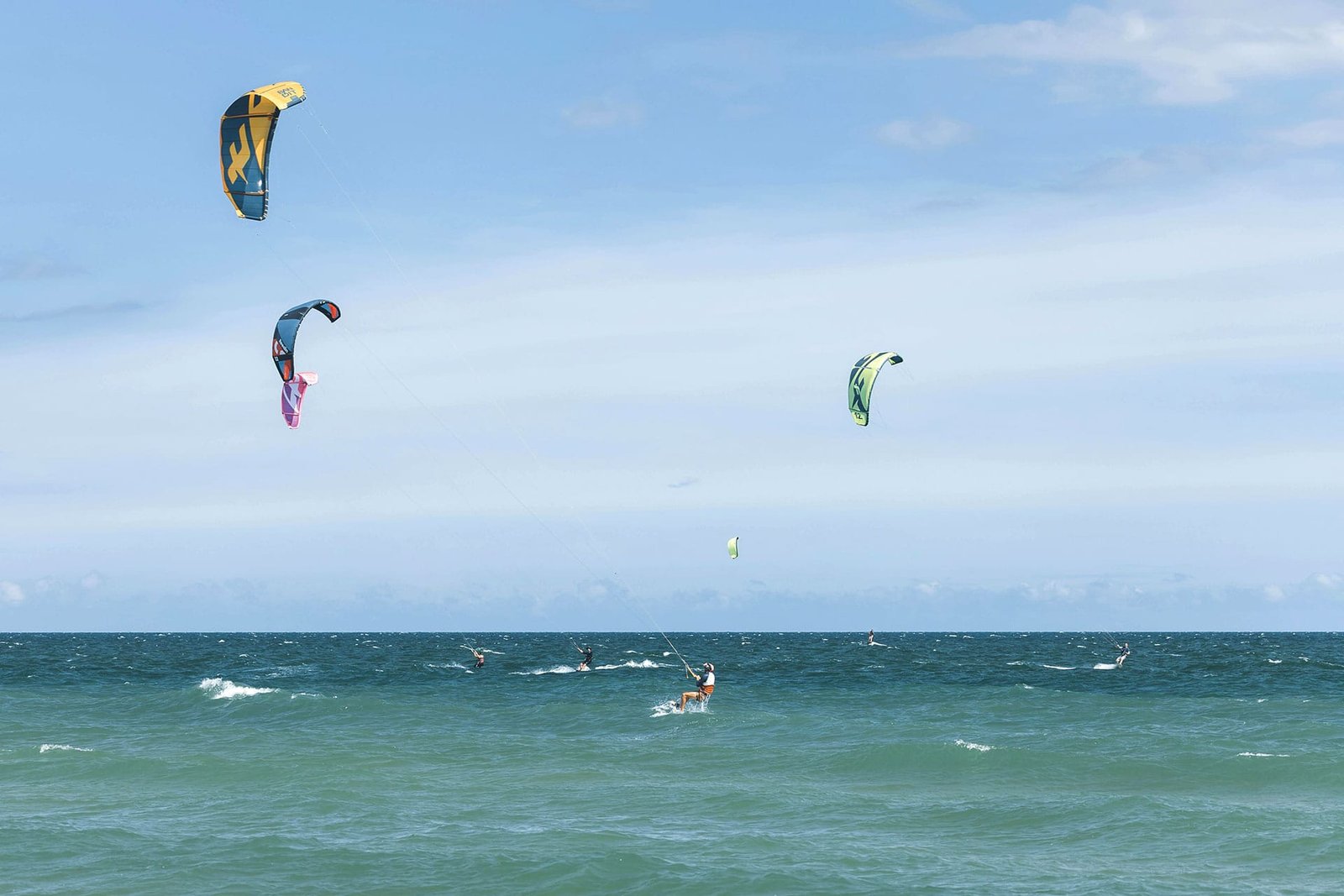
Kite Beach: Where the Trade Winds Never Stop
Kite Beach lies on the eastern coast of Sal Island, about 2 km from Santa Maria, and is one of the island’s most popular spots for water sports, particularly kitesurfing. Easily reached by taxi, rented quad, or a short drive from the town centre, the beach stretches wide with fine sand and strong, steady winds that attract both beginners and professional riders.
Several kitesurf schools operate directly on the beach, offering equipment rental, lessons, and rescue services. Visitors can also find beach bars and small cafés serving drinks and light meals, as well as shaded seating areas where non-surfers can relax.
The sea here is usually choppy with powerful currents, making it less suited for casual swimming but ideal for board sports. During the season, Kite Beach becomes a lively hub with international kitesurf competitions, yet it still retains an open, natural feel compared with the busier Santa Maria main beach.
Morning Rituals: When the Champions Wake
The sun has not yet emerged from behind Monte Grande when the first riders enter the water. 6 AM at Kite Beach, and the winds are building already. That reliable northeastern pulse transforms this stretch of Sal’s eastern shore into a natural playground. The early crew knows what tourists sleeping in Santa Maria’s hotels won’t discover until noon — morning wind hits cleaner, before the thermal kicks in and turns everything choppy.
Mitu Monteiro is out there, of course. At 41, the four-time world champion still rides these waters like he owns them, which in a sense he does. This beach made him, and he made it famous. Watch him for five minutes and you understand why every kite school from here to Tarifa has his poster on the wall. The man doesn’t ride waves. He converses with them, each turn a word in a language he invented.
The beach stretches three kilometres from Santa Maria’s edge toward Ponta Leme, a crescent of sand that looks deceptively simple until you understand its genius. The reef break creates zones — beginners’ soup near shore, an intermediate playground in the middle, and serious wave action further out, where only the confident venture. It’s a natural progression system, built by volcanic geology and refined by centuries of trade winds.
Kite Beach: The Physics of Paradise
Why Here
Geography made Kite Beach inevitable. Sal sits at 16°N latitude. It’s perfectly positioned to catch trade winds that blow 15-25 knots from November through June. It’s not like the gusty, unpredictable nonsense that plagues Mediterranean spots. Instead, it has a steady, workable wind. The island itself is essentially a 30-kilometre wind funnel, flat enough that nothing blocks the flow, rough enough that thermal dynamics create that magical afternoon boost when the land heats up.
But wind alone doesn’t make a kite mecca. Fuerteventura has wind. Tarifa has more wind than it knows what to do with. What Sal has is the perfect combination: wind, waves, and water temperatures that hover around 24°C year-round, plus 350 days of sunshine, plus that peculiar Cape Verdean magic where everything somehow works even when it shouldn’t.
The beach faces east-northeast, meaning the wind blows cross-onshore. For non-kiters, that’s the sweet spot — powerful enough to launch you, safe enough that you’ll blow back to the beach if something goes wrong. No offshore terror where one mistake means a one-way ticket to Senegal. No dead onshore where you can’t edge properly. Just that perfect angle where physics and fun align.
Democracy of Zones
Walk the beach at peak season and you’ll see the most democratic lineup in kitesurfing. Absolute beginners doing their first water starts in the shallow inside section, their instructors standing waist-deep, shouting encouragement in six languages. Twenty meters out, intermediate riders are working on transitions, that moment when you switch direction and briefly surrender to chaos before finding control again. And beyond them, where the reef creates proper waves, the artists work — strapless airs, wave rides that last longer than seems possible, the kind of moves that end up on magazine covers.
This natural segregation prevents the carnage you see at other spots where everyone piles into the same water. Here, you naturally find your level. Try to venture beyond your ability, and the ocean politely but firmly suggests you reconsider.
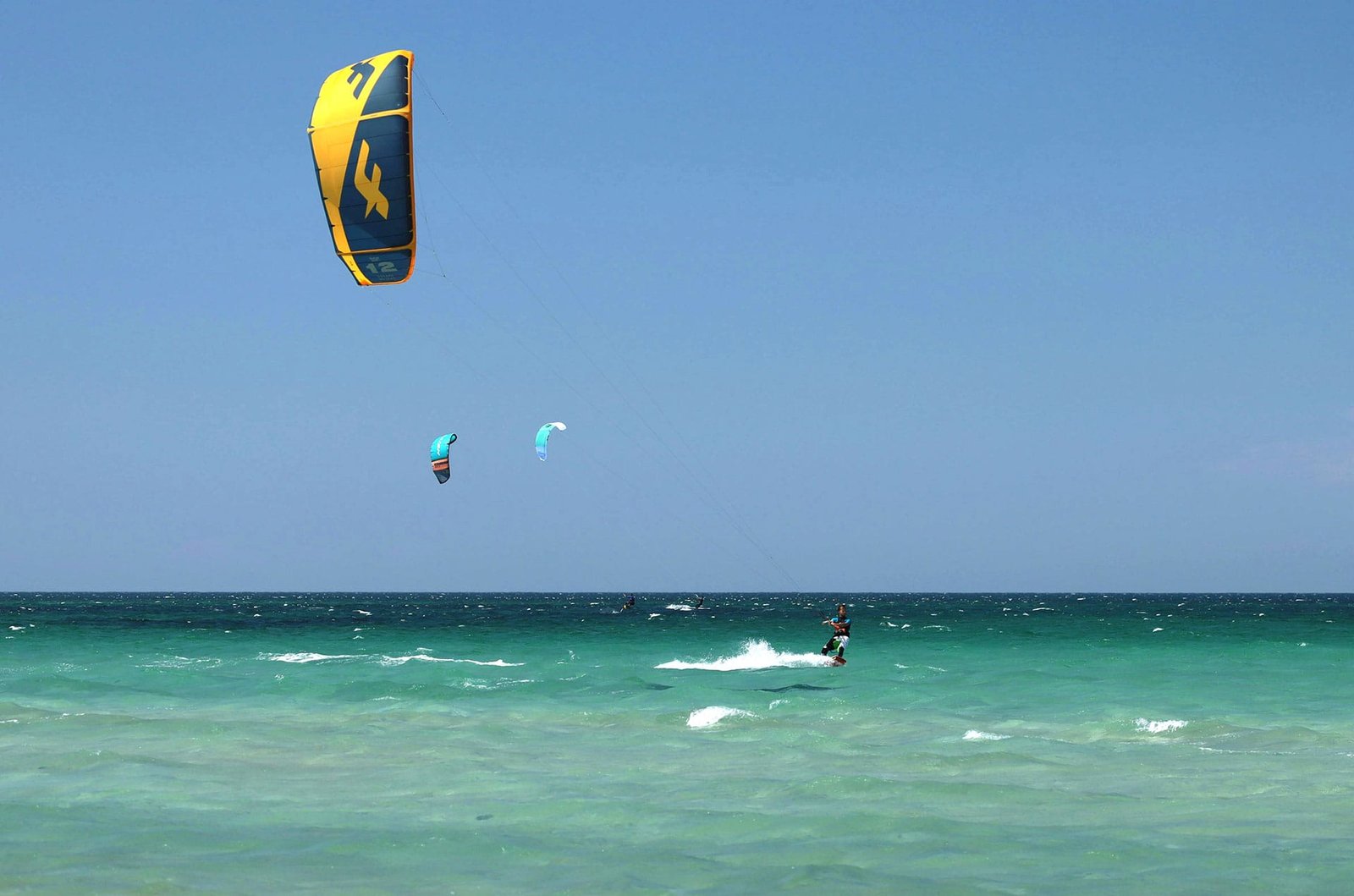
Kite Beach And The School Invasion
Everyone’s a Teacher
Count the kite schools along Kite Beach and you’ll lose track somewhere around fifteen. Twenty in high season. They multiply like the plastic chairs at beach bars, each claiming their piece of sand, their slice of the teaching economy that now drives Santa Maria more than salt ever did.
ION Club controls the premium real estate, their matching rashguards and the latest F-One gear, making them look like a small army. Germans mostly, teaching with that peculiar Teutonic mix of precision and barely contained excitement. “Ja, ja, now pull the bar, PULL THE BAR!” echoes across the water in accented English that could be from Munich or Mozambique — everyone teaches in English here, the universal language of kite instruction.
However, the real action takes place at the local schools, where Cape Verdean instructors, who learned to kite on fishing lines and rice bags, now teach investment bankers from London how to avoid self-harm. Guys like Carlos Silva, who started kiting in 2003 with borrowed gear and now runs three rescue boats and employs twelve instructors.
The Economics of Wind
A beginner package runs €400-600 for six hours of lessons. Equipment rental, another €50-80 per day. Add accommodation, food, the inevitable caipirinha addiction, and a week at Kite Beach, and it easily tops €2,000. For Santa Maria, whose economy relied on salt mining until the 1980s and fishing until the fish stocks were depleted, kitesurfing represents the third economic revolution.
The numbers tell the story: 35,000 tourists in 2010, over 100,000 by 2019. The pandemic killed 2020, but 2023 saw the beach more crowded than ever. Every flight from Lisbon brings another squadron of kite bags. The taxi drivers know to charge €10 for the five-minute ride from Santa Maria to Kite Beach—highway robbery anywhere else, but here you pay it because what choice do you have? Walk with 30 kilos of gear in this heat?
The Kite Beach Revolution
From Fishing Lines to World Titles
Before kitesurfing conquered Sal, the island’s youth had two primary career options: working in hotels or leaving the island. Now they have a third way, one that keeps them in the water they grew up in, earning European wages while never having to go home.
Take Airton Cozzolino. Italian name, Cape Verdean soul, the 2023 world champion who learned to kite by watching tourists and borrowing gear when they went for lunch. His story reads like mythology now—the kid from nowhere who conquered the world — but twenty years ago, he was just another island boy with saltwater in his veins and no money for equipment.
Now Airton travels the world on sponsor dollars, but he still lives in Santa Maria, still rides Kite Beach when he’s home. His success created a template: be good enough, and the world comes to you. Every kid on the beach with a borrowed kite dreams of being the next Airton, the next Mitu. Some will make it. Most won’t. But the dream itself has value, keeping young Cape Verdeans connected to their ocean heritage even as tourism transforms everything else.
The Women’s Revolution
Until five years ago, kitesurfing on Sal was exclusively male territory. The local girls watched from the beach while their brothers and boyfriends claimed the waves. That’s changing, slowly but inevitably.
Inês Correia leads the charge. Portuguese by passport, Cape Verdean by choice, she moved to Sal in 2018 and immediately started teaching local girls for free. Not charity — revolution.
Her informal school now has thirty regular students, aged eight to eighteen. Some will become instructors. Others just want to claim their piece of the ocean. Either way, they’re changing what’s possible for Cape Verdean women, one water start at a time.
Ponta Preta: Where Legends Graduate
Kite Beach is the nursery, but Ponta Preta is the university. Fifteen minutes’ drive west, on Sal’s Atlantic side, waves that have travelled from storms off Newfoundland unload onto a volcanic reef with violence that makes strong men reconsider their life choices.
This is where Kite Beach graduates go to become legends or get humbled, often both in the same session. The wind here blows offshore — exactly what you don’t want as a beginner, precisely what you need for the kind of riding that wins world championships. The waves jack up to six meters in winter, moving so fast you need to paddle to catch them even with a kite.
The GKA World Tour stops here every February, and the contrast with Kite Beach couldn’t be starker. There, everyone’s welcome. Here, the ocean interviews you at the entry point, and most applications get rejected. The shore break alone has destroyed more boards than a wood chipper. The rocks have names like “Devil’s Teeth” and “The Surgeon” (because it’ll open you up neat and clean).
Yet every decent rider from Kite Beach eventually attempts Ponta Preta. It’s a rite of passage, like a jazz student sitting in at the Blue Note. Most get schooled, paddle in, and develop a new respect for the riders who make it look easy. But occasionally, once a season, someone shows up who belongs there. The ocean recognises them, accepts them, and another Cape Verdean champion is born.
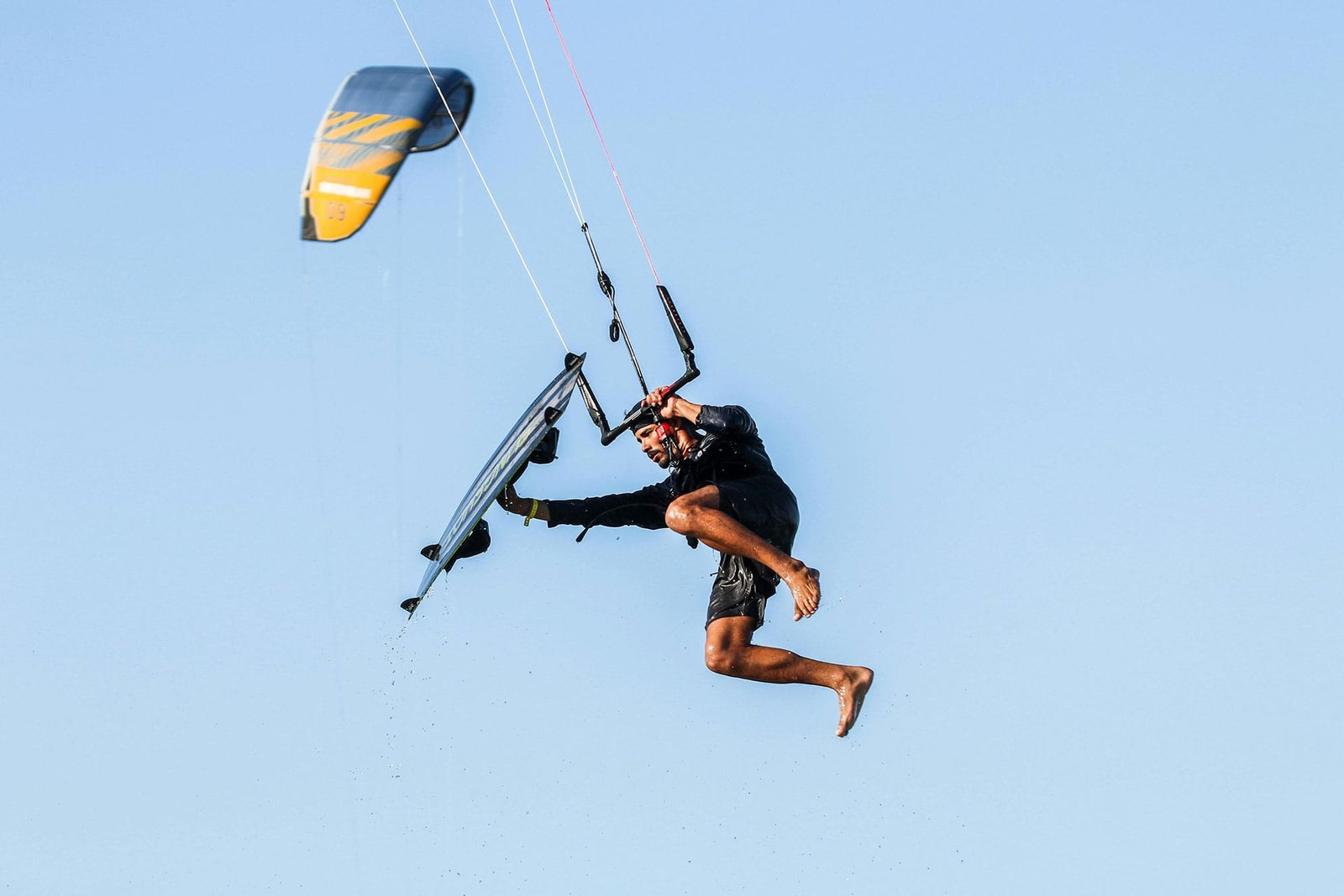
Santa Maria After Dark
By 6 PM, the wind dies and Kite Beach empties. The action shifts to Santa Maria. That former fishing village-turned-tourist town manages to be both completely fake and utterly authentic. The main drag resembles someone trying to build Miami Beach with a quarter of the budget. And twice the charm. Pastel buildings that photograph better than they look, restaurants serving “authentic Cape Verdean cuisine” that no Cape Verdean grandmother would recognise, bars where a caipirinha costs more than most locals make in a day.
But push past the tourist façade and you find the real Santa Maria. Café Criolo, where fishermen still drink grogue at 7 AM. The unnamed place behind the church, where cachupa costs €3 and tastes like the sea. Disco Pirata, where kite instructors dance with hotel workers until dawn, fueled by Strela beer and the knowledge that tomorrow’s wind is guaranteed.
This is where the kite community actually exists. On the water, everyone’s divided by skill level. On land, the Belgian dentist who just bought his third kite shares a table with the local kid who builds his own boards. They can’t speak each other’s language, but they understand each other perfectly. Both worship the same wind gods. Both know the specific pain of a kite hitting water at 40 kilometres per hour. And both will be back on the beach tomorrow, regardless of hangovers, broken ribs, or relationship ultimatums.
Dark Side of Paradise: What Nobody Mentions
Not everything at Kite Beach belongs in the brochure. The crowds, for starters. January through March, you’ll count 200 kites in the air on good days. The beach looks like a parking lot, the water like a bar fight. Collisions happen daily. Someone always claims you snuck their wave. The Germans think the French are rude, the French think the Germans are uptight, everyone thinks the Russians are crazy, and the locals think everyone’s an idiot tourist, which isn’t entirely wrong.
Then there’s the environmental cost. Sal’s water table can’t support this many tourists. Hotels truck in water from desalination plants that burn diesel and dump brine back into the ocean. The reef that creates those perfect waves? Damaged by anchors, trampled by beginners, stressed by warming water that has nothing to do with kitesurfing but affects everything.
Local resentment simmers beneath the surface smiles. Sure, kitesurfing brings jobs. But it also prices locals out of their own hometown. A beach shack that sold grilled fish for €5 in 2010. Now charges €30 for the same meal because Dutch kiters are willing to pay it. Young Cape Verdeans who don’t kite feel like strangers on their own beach, watching Europeans play in water their grandfathers fished.
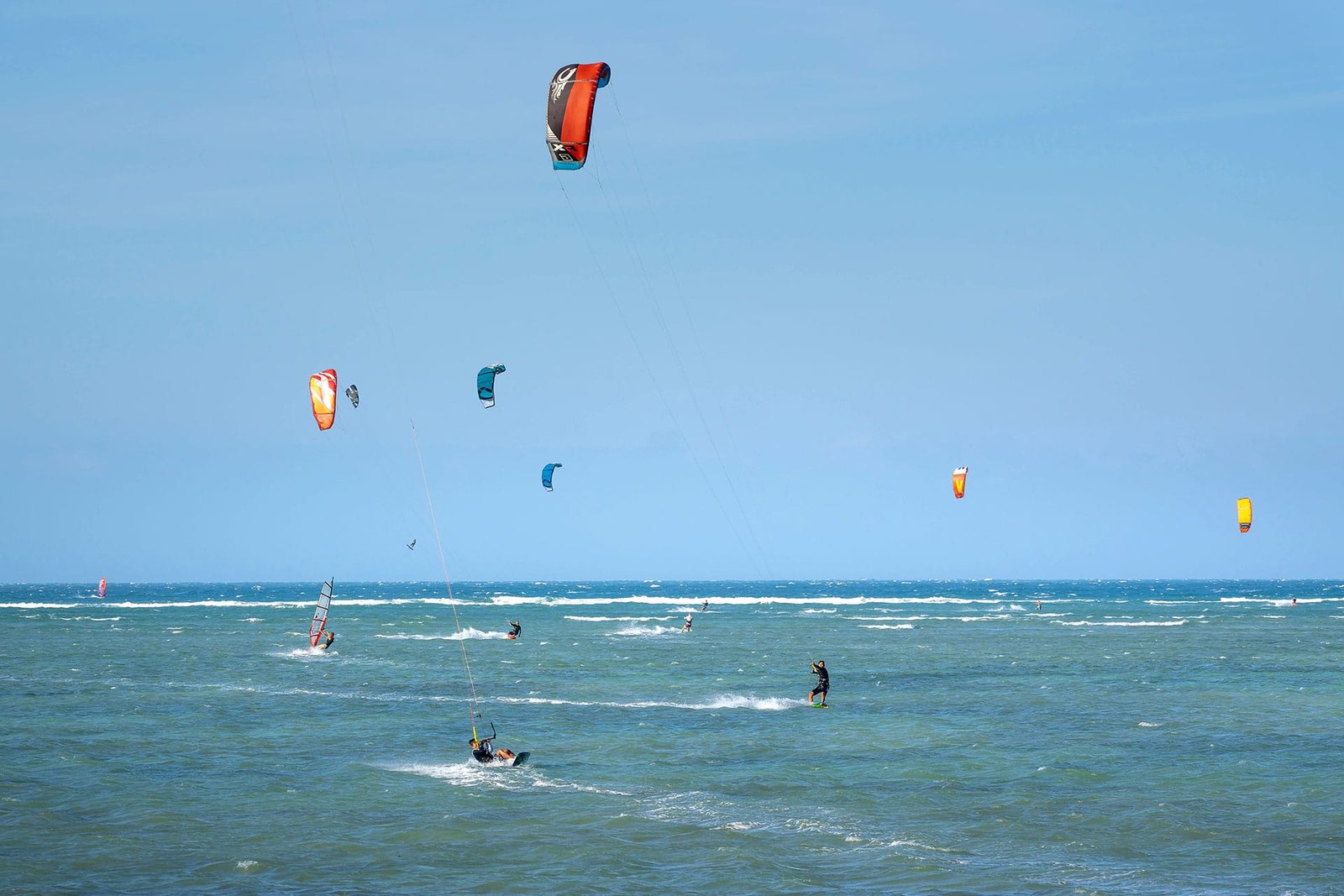
Kite Beach And The Climate Clock
Racing Against Time
Everyone knows climate change is real. It disproportionately affects islands, and Sal is no exception. The trade winds that built this economy are shifting, becoming less predictable. Old-timers swear the wind was better twenty years ago, though that might just be nostalgia talking. What’s not nostalgia: water temperature rising, currents changing, the reef bleaching, where sewage from all those hotels finds its way to sea.
The optimists talk about adaptation. Better forecasting technology. Improved equipment that works in lighter wind. Wing foiling is the next big thing when kitesurfing plateaus. The pessimists book trips to Western Australia, searching for the next spot before this one dies.
Kite Beach is likely to continue evolving as it has in the past. From empty sand to local secret to international destination to overcrowded paradise to whatever comes next. The wind will keep blowing, even if differently. The waves will continue to break, even if the reef beneath them changes. And somewhere, a kid from Santa Maria will borrow a tourist’s old kite, launch themselves into the trade winds, and discover that this beach, for all its flaws and crowds and contradictions, remains one of the last places on earth where wind and water combine to create something close to magic.
The Last Launch on Kite Beach
What Remains When the Wind Dies
On my last evening on Sal, I watched the sunset from the beach. The wind has dropped to 12 knots, barely enough to keep the bigger kites in the air. Only the experts are out now, the ones who can milk power from nothing, who understand that kitesurfing is really about reading the invisible — wind patterns, water state, the subtle messages the ocean sends to those who speak its language.
A young Cape Verdean rider — can’t be more than sixteen — throws a massive strapless air as the sun touches the horizon. For a moment, he’s silhouetted against the orange sky, board grabbed, body twisted in that position that makes no sense until you understand the physics of rotation and return. He lands clean, rides away, and I realise I’m watching the future.
Not just his future, but the future of the beach. Whatever happens — crowds, climate change, economic collapse, the next pandemic — kids like him will still be here. They will still be pushing limits and still proving that sometimes the best things come from the worst conditions. Sal is dry rock, salt, and struggle. And wind. That wind doesn’t alter the island’s geography, but instead reveals its potential.
Kite Beach works the same way. It’s not about the beach itself — there are prettier beaches, safer beaches, beaches with better facilities and cleaner water. It’s about what happens when you combine relentless wind with desperate creativity, when you give people who have nothing a chance to fly. Every kite in the air is a small revolution, a refusal to accept that geography is destiny, that being born on a forgotten island means staying forgotten.
The sun disappears. The wind dies completely. Tomorrow it will return, as reliable as the poverty it temporarily suspends, as constant as the ocean that makes and breaks everyone who challenges it. And the beach will fill again with dreamers and professionals, beginners and champions, all united in their pursuit of those brief moments when human ambition and natural forces align to create the impossible—flight over water, dancing with wind, the democracy of stoke that makes Kite Beach, despite all its problems, one of the last honest places on earth.
The tide rises. The moon appears.
Somewhere in Santa Maria, Mitu Monteiro is probably stretching his back, feeling every one of his 41 years. Somewhere else, a kid is counting their tips from helping tourists launch kites, calculating how many more days until they can afford their own gear.
This is Kite Beach after the cameras stop rolling, after the wind dies, after the tourists fly home. Not paradise, not hell, just a beach where wind made something from nothing, where champions grow from sand and salt water, where every morning promises the same thing — another chance to fly, another opportunity to prove that the best things in life aren’t free but feel like they should be once you’re airborne, carving across the Atlantic chop, connected to nothing but wind and water and the insane belief that humans were meant to soar.
Bibliography and Sources
-
Batalha, Luís, Cape Verde: Identity and Nation in Africa, Routledge, 2004;
-
Lobban, Richard A., Jr. Cape Verde: Crioulo Colony to Independent Nation, Westview Press, 1995;
-
Falcão, Júlio, Windsurfing and Kitesurfing: Techniques, Training, and Tactics, Bloomsbury, 2013;
-
Murphy, Tim, Kiteboarding: Where It’s At…. Human Kinetics, 2010;
-
Strangeways, Ian, Measuring the Natural Environment, Cambridge University Press, 2010;
-
World Meteorological Organisation, Guide to Climatological Practices, WMO, 2011
- GKA Kite World Tour by Global Kitesports Association;
- Inês Correia and her Inês Correia Water Sport Center on Instagram;
- Airton Cozzolino Lopes‘ profile on the Red Bull Website.

